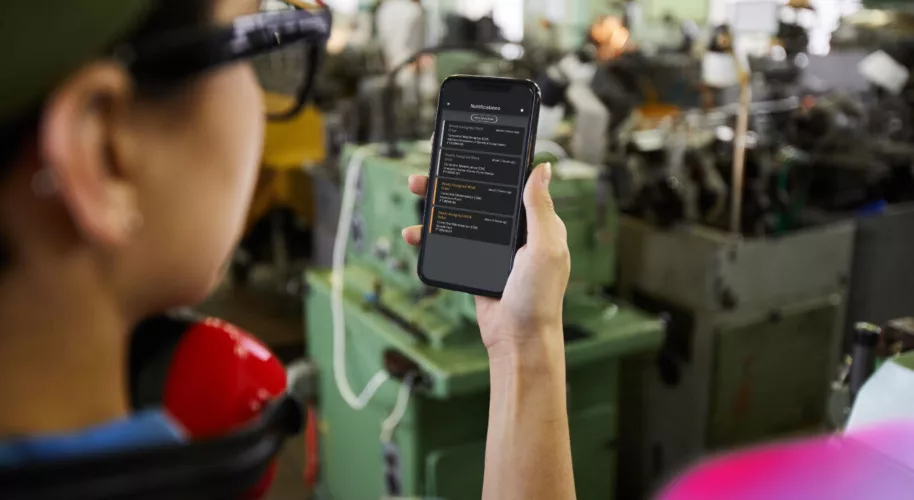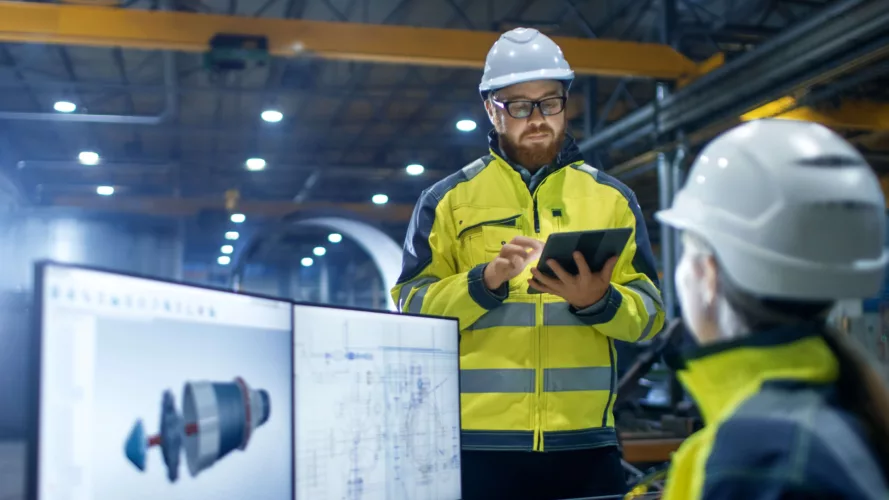The future of maintenance is mobile
While many Computerized Maintenance Management Systems (CMMS) already enable mobile capabilities, it has become a critical feature to look out for. However, only the basic possibilities of the mobile solutions are presently being used. The future of CMMS is mobile, but how far does this reach today?

While many Computerized Maintenance Management Systems (CMMS) already enable mobile capabilities, it has become a critical feature to look out for. However, only the basic possibilities of the mobile solutions are presently being used. The future of CMMS is mobile, but how far does this reach today?

Current State
Traditional maintenance processes still rely too much on manual tasks with a substantial margin for error. Technicians are required to register hours, materials, notes, etc all while trying to be efficient in their work execution throughout the day. Being inaccurate and unreliable decreases the overall effectiveness of the workforce. By adopting a mobile solution, the organisation aims at taking away the burden of the technician to increase efficiency and to adopt a digital way of working. But let us first take a look at the use cases for mobile work execution, as well as its advantages and disadvantage(s).
Some specific advantages that provide a clear return on investment (ROI) for your maintenance processes are the following:
- Reducing paper-based activities is an obvious win. Not only for the technician itself, but also for the follow-up administration services and management check-ups. Having a specific trail of all the CRUD-activities allows for a more transparant flow in case of issues, oversights or corrections.
- Alongside the above paper reduction, enabling the workforce to focus on the job at hand reduces the overall administrative workload. This allows for the person to execute the job they were hired to do, rather than its side-activities.
- Even though connectivity is less and less an issue, having the possibility to perform on- and offline is a must-have in asset locations. Moreover, the CMMS must foresee in a way to store the necessary data offline (such as parts, locations, assets) so that the required registrations can be made. At a later point in time the technician can then sync the data to the cloud to keep everything up-to-date.
- Not only the current job at hand is important, but also the backlog and planned work-orders are necessary to keep track off. While scheduling is always done in the most efficient way, it might be interesting for a technician to pick up an overdue or future work order to optimise its time and travels.
- Last but not least, having the possibility to perform work not only individually but also in teams is key in an efficient organisation. A teamleader should be able to register the hours of all people involved. This reduces the need for individual registrations. On the other hand a person should be able to notify when a work order cannot be completed due to unforeseen issues or the lack of the required skills (handover).
Even though the disadvantages are very limited, it is clear that having the need for mobile devices might be the biggest flaw in the efficiency-gain. This requires a (small) investment in both hardware and software, as well as the maintenance of said devices by IT-personnel. Nowadays, the operating system does not really matter anymore to run the mobile solution in browser or native version. Furthermore, choosing a solution that is front-end based (e.g. Mendix Low-Code) allows for a more user-friendly experience. Many solutions are prepackaged and therefore might not meet your maintenance requirements nor have a visually appealing UI-design.
Future Situation
While 90% off all the current maintenance requirements are already covered by the existing solutions today, some specific trends are still missing today.
- Real-time asset data, using connected IoT, are key in understanding the state off the assets on- and offsite. This enables the technician to perform maintenance from a distance or keep track of its actions realtime while performing the necessary changes.
- Alongside the asset data it might be useful to also have the asset’s plans in a visual shape or form available. This can be done either through a digital twin visually on the screen of the smartphone/tablet, but also by using augmented reality (AR) for recognising and showing the content in a 3D kind of way.
- Not only the maintenance personnel is joining the mobile workflow, but also the customer/asset responsible wants to join this shift. By allowing the client to log into a customer portal, they can immediately create, consult or edit the required maintenances events. Moreover, if RFID or barcode/QR-code scanning is implemented, everyone can take a glance at the history, present and future of the maintenance for the asset.
- Data-driven-maintenance (DDM) is the next step to allow the data to be turned into valuable information for automatic work order creation and technician control. Using theoretical models to create asset-specific models can change the shift from a corrective and preventive way of working to a predictive one. The mobile solution can give an insight in the decision proces for certain event-creations, as well as allow the technician to give feedback back to the system so that the models can be adjusted for future use.

The Essence
In conclusion, mobile capabilities have become an essential feature in Computerized Maintenance Management Systems (CMMS), and the advantages of using mobile solutions for maintenance processes are significant. The ability to reduce paper-based activities, focus on the job at hand, perform work on- and offline, keep track of backlog and planned work-orders, and work in teams all contribute to the efficiency and transparency of maintenance processes. Although there is a small investment required for hardware and software, the benefits outweigh the disadvantages. Looking to the future, trends such as real-time asset data, visual asset plans, customer portals, and data-driven maintenance will further enhance the mobile workflow and enable a predictive way of working. Mobile solutions will continue to play a crucial role in the future of CMMS, and it is essential to stay up-to-date with the latest developments to optimize maintenance processes.
We at Mayker can help you and your organisation with the mobile adaption, by leveraging best practices and an accurate analysis. The correct technology is crucial to form a bridge between IT and Business. Only then will the new way of working increase the ROI. Do not hesitate to contact us for concrete use-cases and insights.
Jelle Steel
Maintenance & Field Service Management Consultant
“Helping companies streamline and achieve more from their maintenance processes”
jelle.steel@mayker.eu


